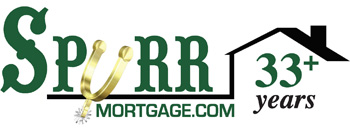 Obtaining the lowest available interest rate on a mortgage is every homeowner’s objective. Lower interest rates result in lower monthly payments, so spending time researching them now will save you time in the long run.
Obtaining the lowest available interest rate on a mortgage is every homeowner’s objective. Lower interest rates result in lower monthly payments, so spending time researching them now will save you time in the long run.
Although you have seen some really great rates advertised, they may not be available to you when you are ready to buy your home. Mortgage rates change from day to day and you cannot anticipate them. To make sure that the rate you actually pay is the rate that you want, you need to lock it in.
What is a rate lock?
A mortgage rate lock is an agreement between a borrower and a lender that guarantees the borrower a specific interest rate on a mortgage. Rate locks are important because interest rates change frequently and the mortgage application process can be time consuming. The rate that was in effect on the day you applied for your loan may not be the rate that is available weeks later when your loan is approved.
Similarly, the rate that was in effect when your loan application was approved may not be available months later when you complete the purchase of the home. Policies vary by lender, but borrowers often have the opportunity to lock in a specific interest rate either at the time the loan application is filed, at some point during loan processing, or once the application has been approved.
No matter which direction you choose, locking in a rate is an important part of the mortgage process because of the role interest rates play in determining your monthly mortgage payment, and the total cost during the lifetime of your loan.
A 1% difference in interest rates results in an additional $65 each month in your mortgage payment. $65 over year adds up to $780 or $23,400 over the life of a 30 year loan.
While you may be tempted to lock in your rate, this may not be the best course of action. There are other things to take in to consideration. Some lenders may charge a mortgage rate lock deposit or provide you a rate lock in exchange for a slightly higher rate than prevailing rates or require you to purchase points that could be fixed or floating.
Many lenders operate within a tiered system. Rate locks for 30 days or less are generally, but some may extend it up to 45 days. Longer rate lock time periods include incrementally higher fees. A 90-day lock will cost more than a 60-day lock; a 120-day lock will cost more than a 90-day lock. A quarter-point in additional fees for each 30-day extension is common, although fees vary widely by lender.
If the loan fails to close prior to the end of the lock-up period, the guaranteed rate expires, and any deposit you made will be forfeited. If the expiration date passes as a result of an action or inaction by your lender, the agreed-upon rate may still be available.
While locking in a specific interest rate protects borrowers against rising interest rates, it may also prevent them from taking advantage of falling interest rates. Some lenders offer a mortgage rate lock float down, which enables borrowers to make a one-time election to exchange their current rate for a lower rate if rates have fallen. Find out whether your lender offers a float down prior to entering into a rate lock agreement.
Even with a rate lock and a mortgage rate lock float down, it is possible to end up paying a higher interest rate than the rate that you agreed to when you signed for the lock. This occurs because many lenders include a “cap” with the lock agreement. The cap permits the guaranteed rate to rise if interest rates rise prior to settlement. The cap does set a limit on the amount the rate can rise, so it provides some protection against rising interest rates.
